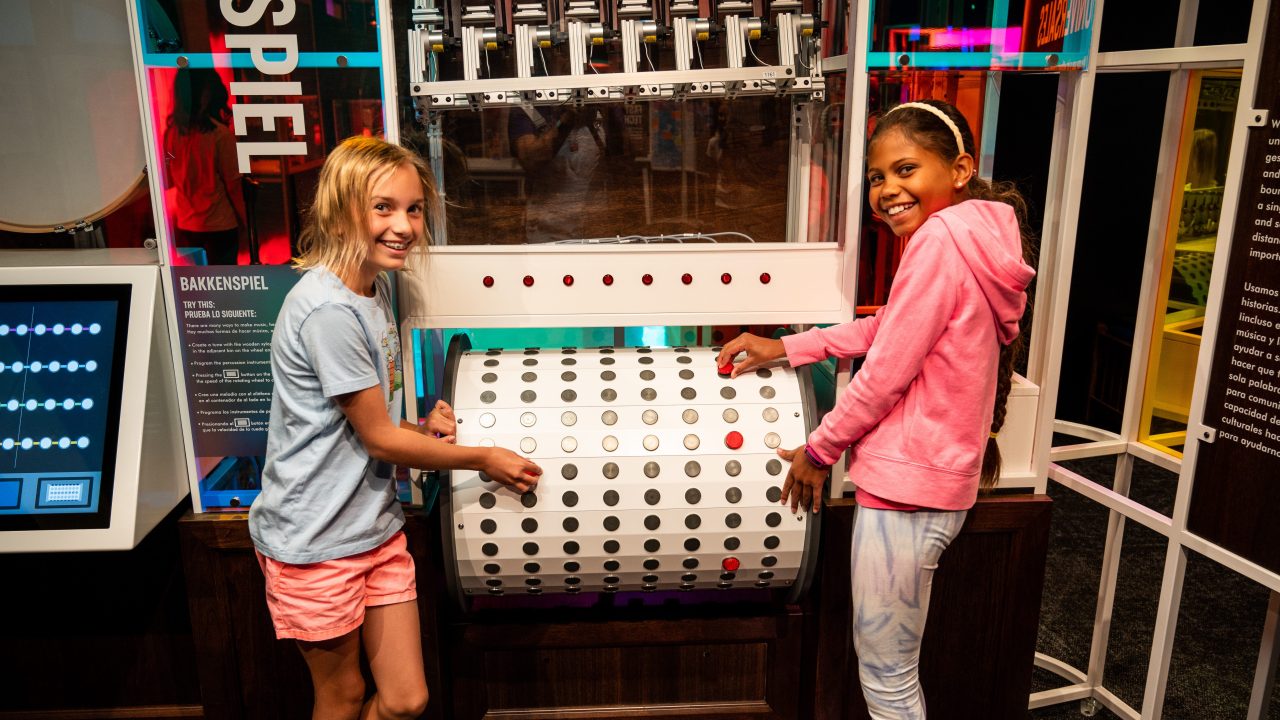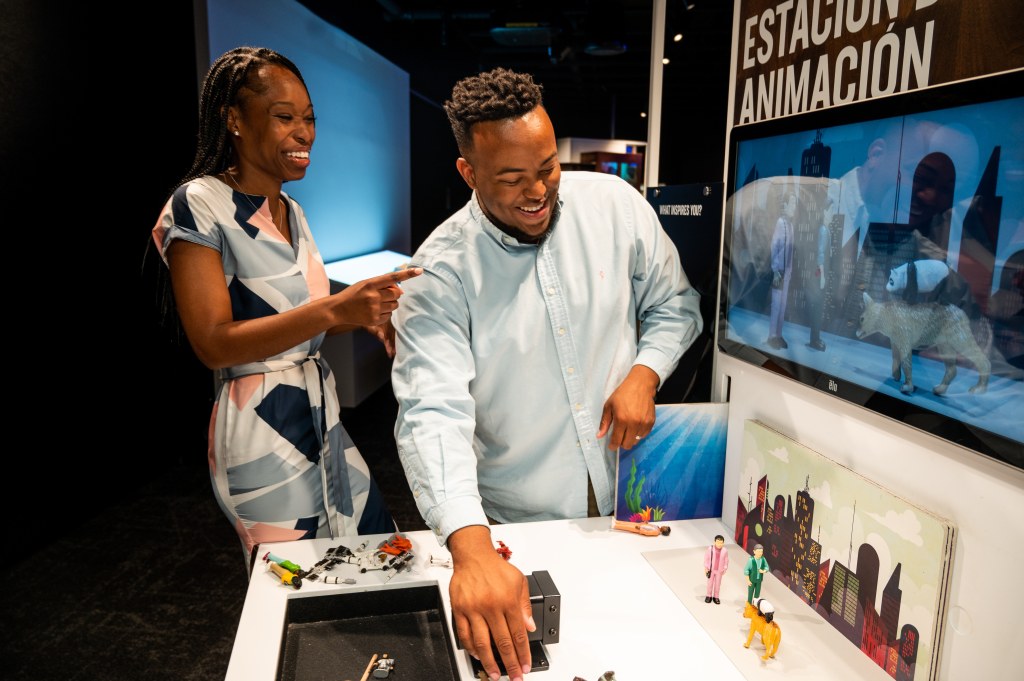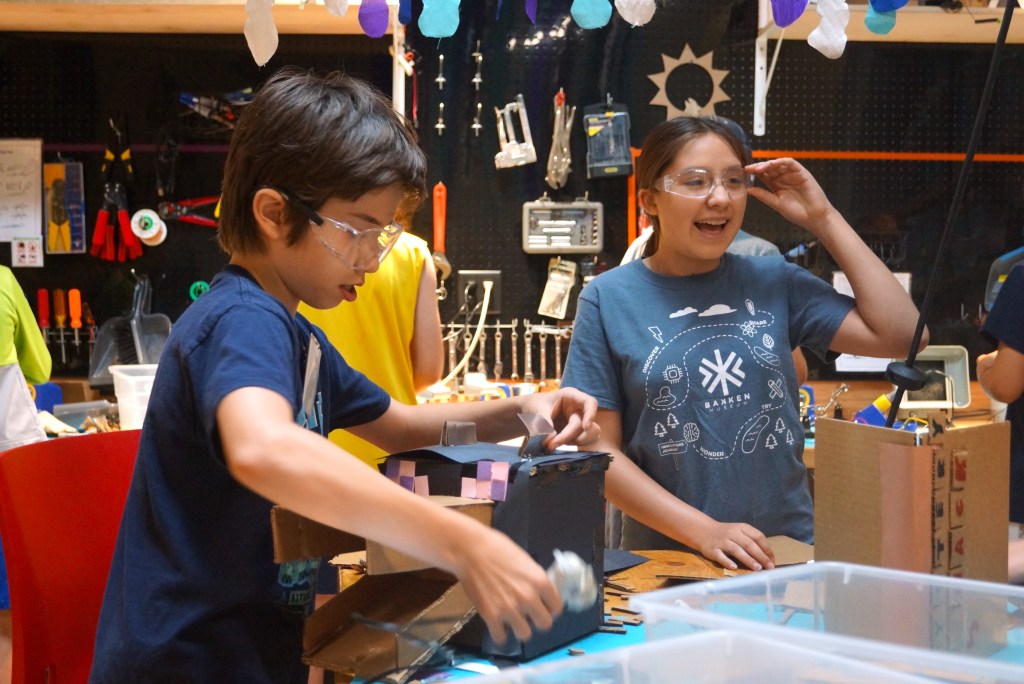
At science museums, we spend considerable time and effort instilling the notion in our visitors that mistakes are not something to shy away from, but opportunities for learning and growth. But we don’t always seem to embrace that idea for ourselves. Too often, we fear making mistakes of our own and avoid new ideas and the risks that can come with them. This is especially true when it comes to DEAI initiatives, where fear of backlash over doing the wrong thing can lead us to dismiss big shifts or bold experimentation in favor of smaller, safer steps—or even inaction.
To counteract this tendency, The Bakken Museum has made a new commitment. Starting this past May, we are releasing an annual public DEAI report where we recount our DEAI activity for the past year and describe next steps for the coming year. This comes out of priorities staff identified in our 2021 DEAI Theory of Change, which informed our 2022-2024 Strategic Plan. As we continue our collective organizational DEAI work, these annual DEAI reports are designed to help us focus on accountability and transparency. In addition to sharing what we have done and intend to do next, our aim is to own where we have made a mistake or missed our intended goal, and share what we have done to move forward afterward. By being transparent about our missteps and our intentions moving forward, we hope to create a culture where we celebrate trying and missing the mark as much as we do trying and succeeding.
For example, last year we attempted to implement one of our new strategic plan initiatives: to incorporate DEAI content and discussion into our quarterly board meetings. This effort began at the Q1 meeting with a discussion that explored the definitions of diversity, equity, accessibility, and inclusion from AAM that Bakken staff adopted in 2021. Board members were engaged and willing participants in the discussion, though it was difficult at times, with members coming from a wide variety of individual experiences and organizations. However, we were unsuccessful in getting DEAI discussions on board agenda for the remainder of 2022, as a leadership transition at the museum and other priorities consumed the available time. While this was discouraging, it also became a learning opportunity, as we discovered both that the board was willing to participate in DEAI discussions and that some things about the meeting itself needed to shift in order to make the time for them. Our new CEO, working with the new Board Chair, has since made these changes, and we have had a DEAI discussion at each board meeting so far in 2023.

In addition to this transparency about the change we still need to make, the reports are also a way for us to acknowledge the change we have made. This is important because DEAI is culture change work, which is a slow and gradual process that happens as much on the individual as the organizational level, making it hard to see when progress is being made. By reporting these gradual changes every year, we can help our staff, board, and community see that they really are happening, even if the work may never be finished. In this way, the changes become cemented as part of the organization’s culture and help to scaffold future changes. Otherwise, without taking the time to highlight these accomplishments and progress, organizational change movements can stall, and cynicism about the efforts can begin to creep in.
In developing the DEAI Report structure, an instrumental resource we’ve drawn on is the Museums and Race Report Card. For the past three years, we have used the report card to examine our museum’s practices, and we will be making public the grades our DEAI committee gives the museum each year in the annual DEAI reports. We have used the Museums and Race Report Card extensively in our recent DEAI work, including in shaping our Theory of Change and in providing the structure for the DEAI report, and it has only become more useful over time as we become more familiar with it.
As we note in the first DEAI Report we published this year, writing the report was challenging. We struggled with what to include, who would do the writing, and if even creating the report was as useful as we thought it would be. While we still don’t have all these answers, we’re leaning into our values and looking to learn both from the process internally and from how the report is used and received externally. We’re reminding ourselves that the direction we head is more important than an exact final destination, and that the reflection on the past year’s DEAI activity that writing the report provided was useful in and of itself.
We know that there are likely missteps or mistakes in the activities described in the DEAI Report—approaches we could have taken that would have been more inclusive, or processes we are doing now that in future years we will change as we continue to learn and grow. For example, we learned after completing our second annual staff demographic survey that we were using incorrect terminology for genders. What other practices do we need to change to be more inclusive, to help move forward our DEAI efforts? We won’t know unless we share what we’re learning, what we’re doing, and what we’re planning to do next, and stay open to learning from both successes and mistakes.










The 2023 report is now posted on The Bakken Museum’s website: https://static1.squarespace.com/static/60909f71a674926a39e73461/t/667d8b7c9c0b4b0c935cf78b/1719503740352/Bakken+Museum+DEAI+Report+2023.pdf